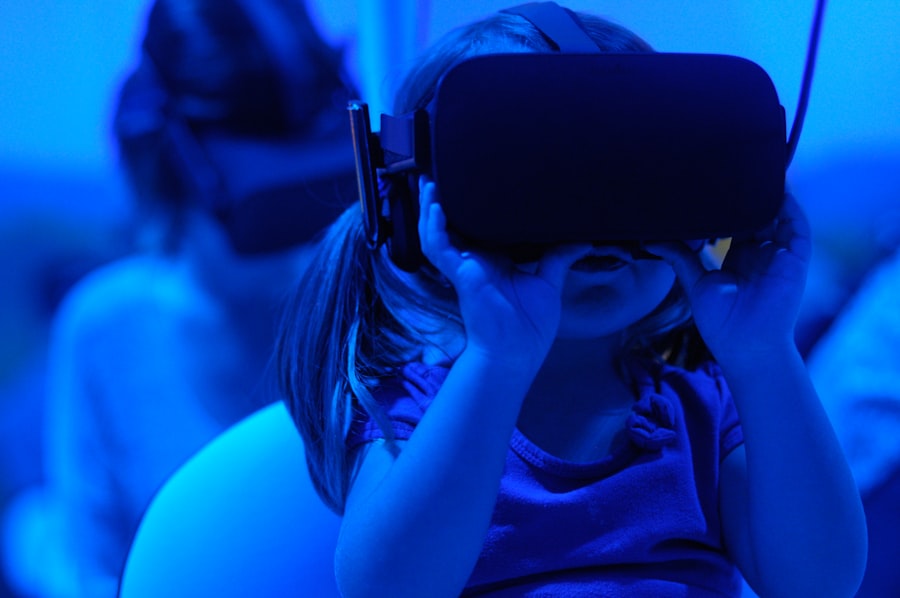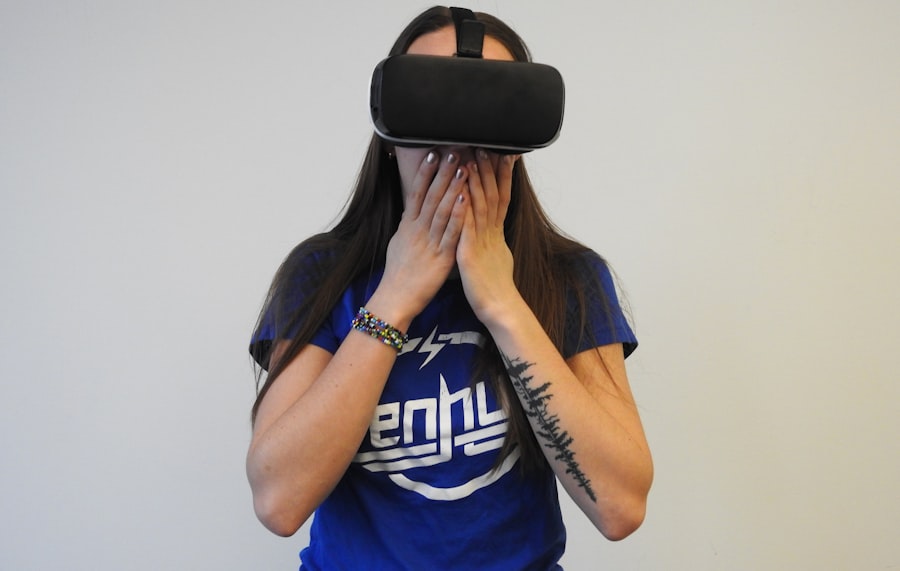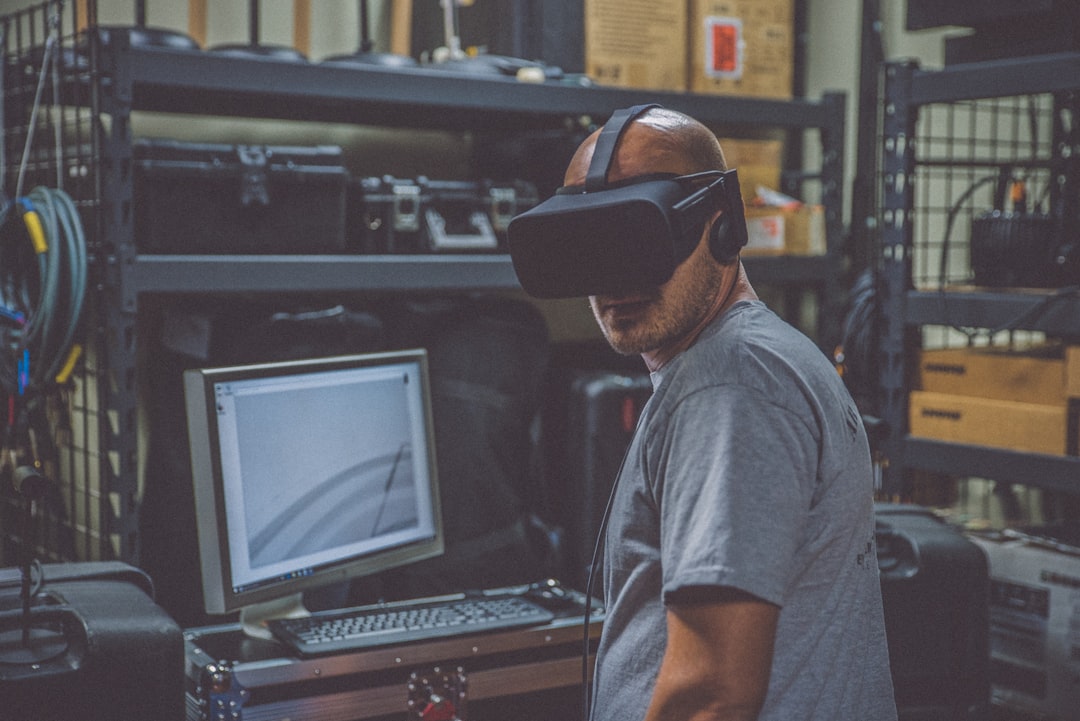The concept of the Metaverse has emerged as a transformative force in the digital landscape, representing a convergence of virtual reality (VR), augmented reality (AR), and the internet. It is envisioned as a collective virtual space where users can interact with a computer-generated environment and other users in real-time. This immersive experience transcends traditional online interactions, allowing individuals to engage in social, economic, and creative activities within a shared digital universe.
The term “Metaverse” was popularized by Neal Stephenson in his 1992 science fiction novel “Snow Crash,” where he depicted a virtual reality-based successor to the internet. Today, the Metaverse is not merely a fictional concept but a burgeoning reality, driven by advancements in technology and a growing interest in immersive experiences. As we delve deeper into the Metaverse, it becomes evident that it is not a singular entity but rather a collection of interconnected virtual environments and platforms.
These spaces are characterized by their ability to facilitate user-generated content, social interactions, and economic transactions. The Metaverse is often described as an extension of our physical world, where digital avatars represent users, enabling them to explore, create, and collaborate in ways that were previously unimaginable. This digital frontier is rapidly evolving, fueled by innovations in hardware, software, and network infrastructure, making it an exciting area of exploration for technologists, entrepreneurs, and everyday users alike.
Key Takeaways
- The Metaverse is a collective virtual shared space, created by the convergence of virtually enhanced physical reality and physically persistent virtual reality.
- Virtual Reality (VR) and Augmented Reality (AR) have evolved to create immersive experiences, blurring the lines between the physical and digital worlds.
- Platforms and technologies such as blockchain, NFTs, and AI are shaping the digital frontiers and enabling the development of the Metaverse.
- The Metaverse is set to revolutionize industries and economies, offering new opportunities for businesses and individuals.
- Social interactions and community building in the Metaverse are redefining how people connect and collaborate in virtual spaces.
The Evolution of Virtual Reality and Augmented Reality
The journey toward the Metaverse has been significantly shaped by the evolution of virtual reality (VR) and augmented reality (AR). VR immerses users in a completely digital environment, often requiring specialized headsets that block out the physical world. Early VR systems date back to the 1960s with inventions like the Sensorama and the Sword of Damocles, which laid the groundwork for future developments.
However, it wasn’t until the 2010s that VR gained mainstream attention with the introduction of consumer-friendly devices such as the Oculus Rift and HTC Vive. These advancements allowed users to experience fully immersive environments, paving the way for applications in gaming, education, and training. On the other hand, AR overlays digital information onto the real world, enhancing our perception of our surroundings.
The launch of mobile applications like Pokémon GO in 2016 showcased AR’s potential to blend digital content with physical spaces, encouraging users to engage with their environment in novel ways. This technology has found applications across various sectors, including retail, healthcare, and tourism. As both VR and AR technologies continue to advance, they are increasingly being integrated into a cohesive Metaverse experience.
The lines between these two realms are blurring, with mixed reality (MR) emerging as a hybrid that combines elements of both VR and AR to create even more immersive experiences.

The Metaverse is supported by a diverse array of platforms and technologies that facilitate its development and expansion. Major tech companies are investing heavily in creating ecosystems that enable users to access and interact within these virtual spaces. Platforms like Roblox and Fortnite have become cultural phenomena, allowing users to create their own games and experiences while interacting with others in real-time.
These platforms exemplify how user-generated content can drive engagement and foster community within the Metaverse. In addition to gaming platforms, social media networks are also evolving to incorporate Metaverse elements. Facebook’s rebranding to Meta signifies its commitment to building a comprehensive Metaverse experience that integrates social networking with immersive environments.
Technologies such as blockchain are playing a crucial role in this evolution by enabling secure transactions and ownership of digital assets within the Metaverse. Non-fungible tokens (NFTs) have gained popularity as a means of representing ownership of unique digital items, further enhancing the economic landscape of the Metaverse. As these platforms continue to develop, they will shape how users interact with each other and their digital environments.
The Impact of the Metaverse on Industries and Economies
| Industry | Impact of Metaverse |
|---|---|
| Entertainment | Enhanced immersive experiences, virtual events, and new revenue streams |
| Retail | Virtual shopping experiences, digital storefronts, and personalized customer interactions |
| Education | Virtual classrooms, interactive learning environments, and global access to education |
| Healthcare | Telemedicine, virtual consultations, and medical training simulations |
| Real Estate | Virtual property tours, remote property management, and digital staging |
| Finance | Virtual banking, digital currencies, and decentralized finance applications |
The emergence of the Metaverse is poised to have profound implications for various industries and economies worldwide. In entertainment, for instance, the gaming industry has already seen significant shifts as players increasingly seek immersive experiences that go beyond traditional gameplay. The rise of virtual concerts and events within platforms like Fortnite demonstrates how the Metaverse can redefine entertainment consumption.
Artists can reach global audiences without geographical limitations, creating new revenue streams and opportunities for collaboration. Moreover, industries such as real estate are beginning to explore how the Metaverse can transform their business models. Virtual real estate is becoming a hot commodity as companies invest in digital land within popular platforms.
This trend has led to the creation of virtual storefronts and showrooms where businesses can engage customers in innovative ways. Additionally, education is experiencing a revolution as institutions leverage VR and AR technologies to create interactive learning environments that enhance student engagement and retention. The potential for remote collaboration and training in fields such as medicine and engineering further underscores the Metaverse’s capacity to reshape traditional industries.
Social Interactions and Community Building in the Metaverse
One of the most compelling aspects of the Metaverse is its ability to foster social interactions and community building among users from diverse backgrounds. In this digital realm, individuals can connect with others who share similar interests or passions, transcending geographical barriers that often limit real-world interactions. Virtual worlds provide spaces for collaboration, creativity, and socialization, allowing users to form friendships and communities based on shared experiences.
The social dynamics within the Metaverse are unique; users often adopt avatars that represent them in these virtual spaces, allowing for self-expression in ways that may not be possible in real life. This anonymity can encourage individuals to engage more freely with others, leading to deeper connections and interactions. Events such as virtual meetups, concerts, and conferences are becoming increasingly popular as they provide opportunities for users to gather in shared spaces regardless of their physical location.
These interactions not only enhance personal relationships but also contribute to a sense of belonging within the broader Metaverse community.
Ethical and Legal Considerations in the Metaverse

Data Privacy and Security
With users spending considerable time in these virtual environments, vast amounts of personal data are generated and collected. Ensuring that this data is protected from breaches or misuse is paramount for maintaining user trust and safety.
Intellectual Property Rights
Issues related to intellectual property rights are becoming increasingly complex within the Metaverse. As users create content—be it art, music, or virtual goods—the question of ownership becomes critical. Who holds the rights to user-generated content? How can creators protect their work from unauthorized use?
Inclusivity and Accessibility
Furthermore, there are concerns about inclusivity and accessibility; ensuring that all individuals can participate in the Metaverse regardless of socioeconomic status or physical ability is essential for fostering a diverse community.
The Future of the Metaverse: Opportunities and Challenges
Looking ahead, the future of the Metaverse presents both exciting opportunities and formidable challenges. On one hand, advancements in technology promise to enhance user experiences through improved graphics, faster connectivity, and more intuitive interfaces. As hardware becomes more affordable and accessible, a broader audience will be able to engage with immersive environments.
This democratization of technology could lead to an explosion of creativity as individuals from various backgrounds contribute their unique perspectives to the Metaverse. However, challenges remain that could hinder its growth. The digital divide poses a significant barrier; not everyone has equal access to high-speed internet or advanced devices necessary for fully experiencing the Metaverse.
Additionally, regulatory frameworks must evolve to keep pace with rapid technological advancements while ensuring user safety and ethical standards are upheld. Striking a balance between innovation and regulation will be crucial for fostering an inclusive environment where all users can thrive.
Embracing the Potential of the Digital Frontier
The Metaverse represents an unprecedented opportunity for innovation across multiple domains—social interaction, commerce, education, entertainment—each ripe for exploration and development. As we stand on the brink of this digital frontier, it is essential for stakeholders across industries to collaborate in shaping its evolution responsibly. By addressing ethical concerns, fostering inclusivity, and leveraging technological advancements thoughtfully, we can harness the full potential of the Metaverse while ensuring it serves as a positive force for society at large.
The choices we make today will shape not only our experiences but also those of future generations navigating this expansive digital landscape. The journey into the Metaverse is just beginning; how we navigate it will define its impact on our lives for years to come.
If you are interested in learning more about the future trends and innovations in the metaverse and how they are evolving user experiences, check out this insightful article here. It delves into the exciting developments shaping the digital landscape and offers a glimpse into what the future holds for metaverse technology.
FAQs
What is the metaverse digital?
The metaverse digital refers to a collective virtual shared space, created by the convergence of virtually enhanced physical reality and physically persistent virtual reality. It is a concept that has gained popularity in recent years due to advancements in technology and the increasing integration of digital experiences into everyday life.
How does the metaverse digital work?
The metaverse digital works by creating a virtual environment that users can access and interact with through the use of digital devices such as computers, smartphones, and virtual reality headsets. This environment can be designed to simulate real-world experiences, as well as offer unique and fantastical experiences that are not possible in the physical world.
What are some examples of the metaverse digital?
Some examples of the metaverse digital include virtual reality games and experiences, social virtual worlds, and immersive digital environments such as those found in virtual reality theme parks or museums. Additionally, some companies are exploring the concept of creating interconnected virtual spaces that span multiple digital platforms and experiences.
What are the potential uses of the metaverse digital?
The potential uses of the metaverse digital are vast and varied. They include entertainment, social interaction, education, training, virtual tourism, virtual commerce, and much more. The metaverse digital has the potential to revolutionize the way we interact with digital content and each other, offering new and exciting opportunities for creativity and innovation.
What are the challenges and concerns associated with the metaverse digital?
Some of the challenges and concerns associated with the metaverse digital include issues related to privacy and security, as well as the potential for addiction and negative psychological effects. Additionally, there are concerns about the impact of the metaverse digital on real-world social interactions and the potential for creating further divides between those who have access to digital technology and those who do not.

Leave a Reply